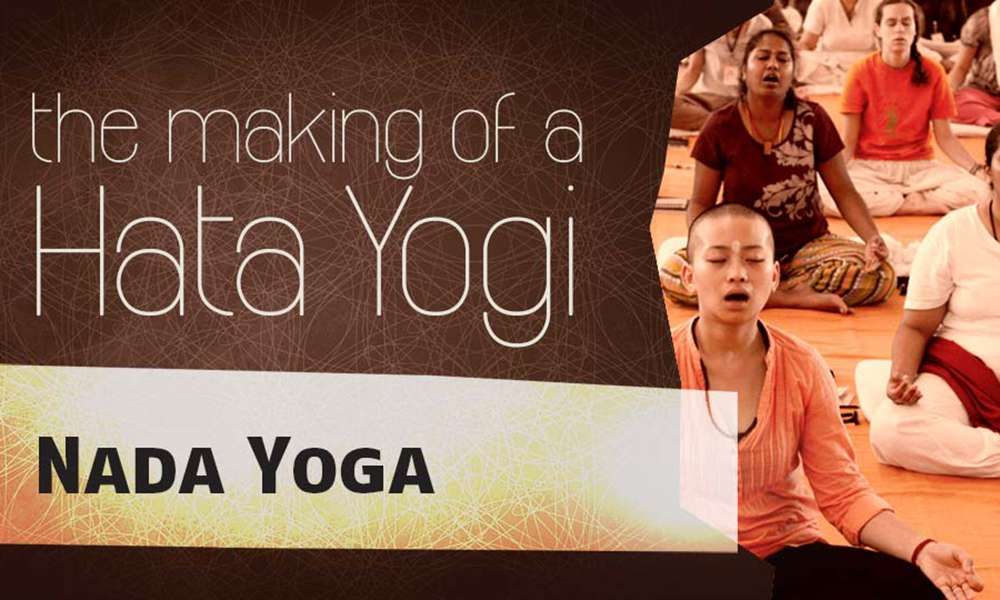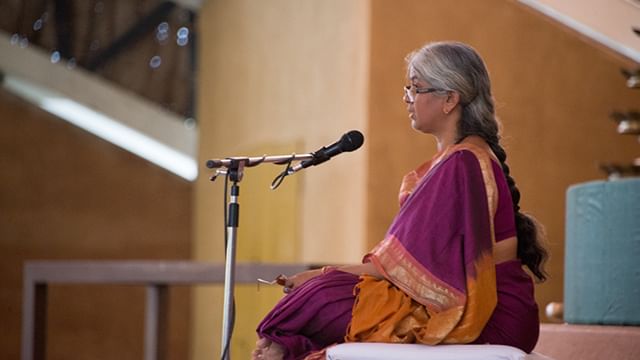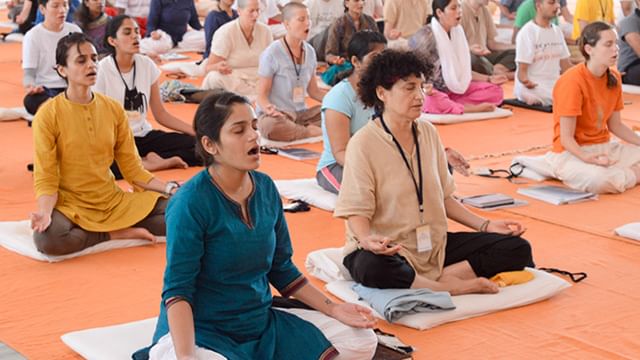The Making of a Hata Yogi: Nada Yoga
In Week Ten of our series “The Making of a Hata Yogi,” we look at Nada Yoga, a powerful aspect of training at the Hata Yoga School.

Week10 The Isha Hata Yoga Teacher Training Program is an endeavor to bring back classical yoga in its purest form and to train teachers who can impart this phenomenally powerful science. In this series, we will be following the participants through their exciting 21-week journey.
In Week Ten of the program, we look at Nada Yoga, a powerful aspect of training for participants at the Hata Yoga School.
“Nada” means sound. Sadhguru says, “If you consecrate and energize that, it becomes Nada Yoga. Today, modern science sees the whole existence as a vibration. Where there is vibration, there is bound to be a sound. So in yoga, we say the whole existence is just a sound. We call this Nada Brahma, which means that the creation and the creator is just sound.”

Sadhguru tells us of his experience of Nada Brahma when he journeyed to lake Kanti Sarovar, just above Kedarnath in the Himalayas: “I was sitting silently on the banks of Kanti Sarovar, eyes wide open, when I heard this song loud and clear in my own voice. It was so loud that it was as if the whole mountain was singing it. It was my voice, and it was in Sanskrit, a language I never learned. In my experience, everything had turned into sound. I did not create the song – the relationship of sound and form just descended upon me.”
Subscribe

The participants of the Hata Yoga School have been learning some sacred chants and mantras. They began to learn the invocation Asatoma Sadhgamaya, they were then initiated into the utterance of Aum, followed by the more challenging Nirvana Shatakam and the beautiful Linga Bhairavi Stuthi. For all of them, this has been a highly illuminating experience. One of the participants tells us: “When I hear myself chant and pay close attention to the vibrations, I feel it creates a certain distance between the body-mind and me. Sometimes I feel like the chanting is just happening, like a process.”
About the science of mantras, Sadhguru says: “Sound has an impact on both the body and the mind. A mantra is a mathematically organized sound pattern that has a deep impact on the system. One can break through limitations in so many different ways just by uttering certain mantras. So there is a whole science of mantras – understanding the relationship between sounds and forms and using it to your benefit. It is a very essential science.”

Given that all these chants are in Sanskrit, it becomes very crucial – and challenging – for the participants to learn the precise pronunciation. Sadhguru says, “You need to understand that this is not a lyric, this is a chant. A lyric means it is valuable because of its meaning. A chant is valuable because of the way the sounds are engineered.” Sadhguru gives us a fascinating insight into the wonderful language, Sanskrit: “If you have mastery over the sound, you will also have mastery over the form. A whole science of calling a particular form by the reverberation it sets forth is present in Indian culture. This is a very deep observation of nature. If you are in a certain state of perception – which we traditionally call Ritambhara – if you look at any form, the reverberation that that particular form gives out is clear to you. Based on that reverberation you give it that kind of name, so when you utter that sound it has a contact with the form. So Sanskrit is not an invented language, it's a discovered language.”
For those belonging to western cultures, however, uttering these sounds poses some difficulties. “Those who are not exposed to any other language except English must be extremely careful with the chants,” Sadhguru cautions, “because English has very limited pronunciation, it doesn’t move all over the place. You are speaking from only 26 letters in the alphabet. If you were speaking some Indian language, your pronunciation would be much more fluid.”

However, those participants from non-Indian backgrounds seem to have one advantage because, referring to Adi Shankara’s Nirvana Shatakam, Sadhguru tells the participants, “If you simply listen to the chant, it’s good for you because you don’t understand a word of it. Indian people have trouble because they try to understand the meanings... they don’t know all the words, they know a few words and they make up their own meaning. Meaning is not important.”

Amplifying that, he says, “There are sounds in the existence, there are no words in the existence. Words are one hundred percent our making. A chant is existential. It is not social or cultural. A song is social and cultural. A chant is neither because it is about the sounds, it is not about the meanings that we attach to the sounds. But we also attach meanings to chants because a human being is not all existential, a human being is to quite an extent, psychological.”

The participants’ reactions to Nada Yoga have been quite ecstatic. Srividhya says, “The Linga Bhairavi Stuthi is almost like melting into the Devi's lap. So feminine, so motherly! You realise the importance of pronunciation, when you say, for instance, ‘Bairavi’ instead of ‘Bhairavi.’ There is a certain majestic feel to the chant and it almost instantly connects you to Devi.”
Editor's Note: Vairagya, Sounds of Isha's album of sacred chants can be downloaded for free. It is also available as part of the Isha Chants app.




